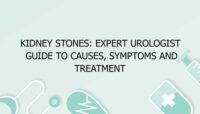Comprehensive Guide to Vascular Surgeries: Costs, Indications, Complications, Recovery, and Life Expectancy
Vascular surgery encompasses a range of procedures designed to treat conditions affecting the blood vessels. These surgeries are crucial for managing various vascular disorders and improving blood flow throughout the body. Understanding the different types of vascular surgeries, their costs, indications, potential complications, recovery processes, and impacts on life expectancy is essential for patients considering these treatments.
1. Endarterectomy
Cost: The cost of an endarterectomy typically ranges from $15,000 to $30,000, depending on the complexity of the procedure and the hospital’s location.
Indications: This procedure is commonly performed to treat severe carotid artery stenosis, which increases the risk of stroke. It involves removing plaque from the carotid arteries to restore normal blood flow to the brain.
Complications: Potential complications include stroke, heart attack, bleeding, infection, and nerve damage. The risk of stroke is particularly significant, though it is relatively low with modern techniques.
Recovery: Recovery usually involves a short hospital stay of 1 to 2 days, with most patients resuming normal activities within a few weeks. Full recovery may take up to 6 weeks, with follow-up visits necessary to monitor progress.
Life Expectancy: The procedure significantly reduces the risk of stroke and can improve long-term outcomes, contributing positively to life expectancy when combined with lifestyle changes and medical management.
2. Angioplasty and Stenting
Cost: Angioplasty and stenting generally cost between $20,000 and $50,000, influenced by the number of stents used and the complexity of the procedure.
Indications: Angioplasty and stenting are performed to open narrowed or blocked arteries, typically in the coronary arteries (for heart disease) or peripheral arteries (for leg pain and claudication). The procedure involves inserting a balloon to widen the artery and placing a stent to keep it open.
Complications: Risks include bleeding, infection, blood clots, and damage to the artery. There is also a risk of restenosis (re-narrowing of the artery) requiring additional treatment.
Recovery: Patients often stay in the hospital for 1 to 2 days. Most can return to light activities within a week, but strenuous activities should be avoided for several weeks.
Life Expectancy: Angioplasty and stenting can improve symptoms and reduce the risk of heart attack or stroke, potentially enhancing life expectancy when combined with long-term medical therapy and lifestyle modifications.
3. Bypass Surgery
Cost: Bypass surgery costs between $30,000 and $70,000, depending on the complexity of the procedure and the number of bypasses needed.
Indications: This surgery is used to bypass blocked arteries, most commonly in the legs (peripheral artery bypass) or heart (coronary artery bypass grafting, CABG). It involves creating a new pathway for blood flow using a graft.
Complications: Possible complications include infection, graft failure, bleeding, blood clots, and heart attack in the case of CABG. Long-term complications can include graft occlusion.
Recovery: Recovery time varies. For peripheral bypass surgery, patients may require 2 to 4 weeks of recovery, while CABG patients may need 6 to 12 weeks. Rehabilitation often includes physical therapy and lifestyle adjustments.
Life Expectancy: Bypass surgery can significantly improve quality of life and longevity, especially in patients with severe arterial blockages, when followed by appropriate medical management and lifestyle changes.
4. Aneurysm Repair
Cost: The cost for aneurysm repair ranges from $30,000 to $60,000, influenced by the type of repair (open surgery vs. endovascular) and the location of the aneurysm.
Indications: This procedure is performed to repair aneurysms, which are abnormal bulges in blood vessels, most commonly in the aorta. Repair is necessary to prevent rupture, which can be life-threatening.
Complications: Risks include bleeding, infection, graft failure, and complications related to anesthesia. There is also a risk of organ damage or stroke in the case of aortic aneurysm repair.
Recovery: Recovery time varies based on the type of repair. Open aneurysm repair typically requires 4 to 6 weeks of recovery, while endovascular repair usually involves a shorter recovery period of 1 to 2 weeks.
Life Expectancy: Successful aneurysm repair can significantly improve life expectancy by preventing rupture and managing underlying conditions that contribute to aneurysm formation.
5. Varicose Vein Surgery
Cost: The cost for varicose vein surgery ranges from $3,000 to $10,000, depending on the type of procedure and the extent of treatment needed.
Indications: This surgery is performed to treat varicose veins, which are swollen and twisted veins often caused by poor blood flow. Treatment options include vein stripping, sclerotherapy, and endovenous laser therapy.
Complications: Potential complications include infection, bleeding, deep vein thrombosis (DVT), and skin changes around the treated area.
Recovery: Most patients can return to normal activities within a few days to a week, although full recovery may take several weeks. Compression stockings are often recommended to aid in recovery.
Life Expectancy: While varicose vein surgery primarily addresses quality of life issues and symptom relief, it can prevent complications such as ulcers and bleeding, indirectly contributing to overall well-being.
Frequently Asked Questions about Vascular Surgeries
- What is vascular surgery?
Vascular surgery is a medical specialty focused on the diagnosis and treatment of conditions affecting the blood vessels, including arteries and veins. - What are the common types of vascular surgeries?
Common types include endarterectomy, angioplasty and stenting, bypass surgery, aneurysm repair, and varicose vein surgery. - What are the indications for vascular surgery?
Indications vary by procedure but generally include severe arterial stenosis, blocked arteries, aneurysms, and problematic varicose veins. - What are the risks associated with vascular surgery?
Risks include infection, bleeding, blood clots, stroke, heart attack, and complications specific to the type of surgery performed. - How long is the recovery period after vascular surgery?
Recovery time depends on the type of surgery. Generally, patients may need a few days to several weeks to resume normal activities, with full recovery potentially taking several months. - What is the cost of vascular surgery?
Costs vary widely based on the type of surgery, complexity, and location. Typical ranges are $15,000 to $70,000 depending on the procedure. - How does vascular surgery impact life expectancy?
Vascular surgery can improve life expectancy by managing severe vascular conditions, reducing the risk of stroke, heart attack, or aneurysm rupture. - What should I do to prepare for vascular surgery?
Preparation may include discussing your medical history with your surgeon, following preoperative instructions, and arranging for post-surgery care and transportation. - Are there any long-term lifestyle changes needed after vascular surgery?
Yes, long-term lifestyle changes often include adopting a heart-healthy diet, regular exercise, and managing risk factors such as blood pressure and cholesterol. - How can I reduce the risk of complications after vascular surgery?
To minimize risks, follow postoperative care instructions, attend follow-up appointments, take prescribed medications as directed, and make recommended lifestyle changes.
Vascular surgery plays a crucial role in managing and treating various vascular conditions. By understanding the different types of procedures, their costs, indications, complications, recovery processes, and impact on life expectancy, patients can make informed decisions and effectively manage their health.


